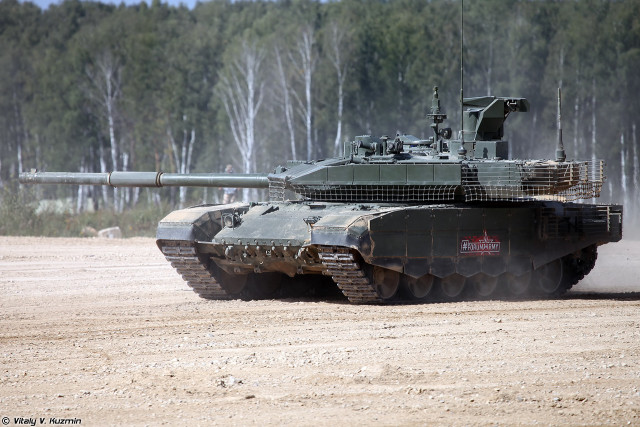TASS on the results of the defense industry in 2022 The Special Military Operation (SVO), which began on February 24, had a significant impact on the entire military-industrial complex (MIC) of Russia this year.
Responding to the needs of the army, the industry adjusted the pace and range of manufactured products in a short time. Many enterprises switched to work in three shifts, because the production of defense industry products has increased — according to some samples, the volumes have increased tenfold. According to Vladimir Artyakov, First Deputy General Director of Rostec, the state corporation has significantly increased the production of armored vehicles, ammunition and multiple launch rocket systems.
In addition, the special operation showed that the fighting is reaching a new level — unmanned. And if at first Russia did not actively use aviation drones, today, according to Artyakov, on the line of contact, the Russian side has surpassed the enemy in terms of the use of reconnaissance drones and unmanned ammunition.
Of course, in addition to increasing the serial production of already well-proven samples of military equipment, the Russian defense industry continues to develop new weapons systems. In 2022, it became known about advanced developments, the completion of a number of tests, modifications and modernization of existing products.
The defense industry turned out to be more adaptive
Despite the implementation of the SVO, the Russian Defense Ministry concluded 36 state contracts with defense industry enterprises worth over 525 billion rubles at the Army-2022 forum. Within the framework of international military-technical cooperation, the order portfolio amounted to $592 million 650 thousand and 1 billion 770 million rubles.
In an interview with TASS, the head of Rostec, Sergey Chemezov, said that Russia's military-industrial complex was the least affected by Western sanctions, while for some other areas, the departure of foreign companies dealt a serious blow. Perhaps that is why the Defense Industry reacted so quickly to the army's request for certain weapons and ammunition used as part of a special operation.
As Alexey Leonkov, the editor of the Arsenal of the Fatherland, noted in an interview with TASS, in 2022, serial production of a whole line of products was established, in particular the Tornado-S multiple launch rocket systems (MLRS), the Zoo and Penicillin counter-battery fighting stations. "All this suggests that the defense industry is already clearly responding to the changes that arise during the military—industrial complex, and is trying to work them out effectively so that our servicemen receive modern complexes in sufficient quantity," he said.
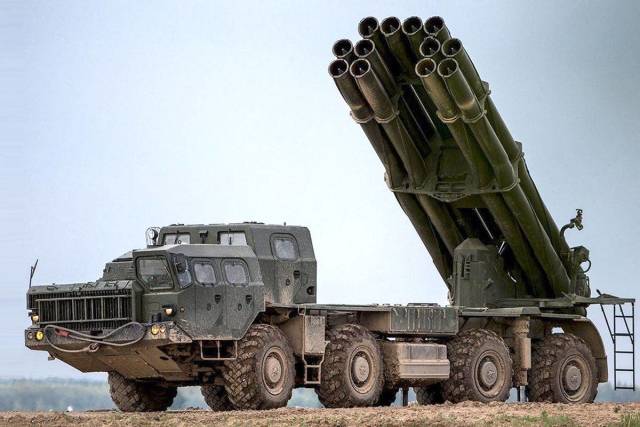 |
| MLRS "Tornado-S". |
| Source: Ministry of Defense of the Russian Federation |
Leonkov noted that today, in general, the production of all defense products has been put on stream. "The enterprises work six days, in three shifts. We turned out to be more adaptive in this regard than the military-industrial complex of NATO countries, which did not expect how such events would develop, and are now urgently trying to repeat what the defense industry is already doing," the expert said.
According to him, the Western defense industry lags behind Russia in terms of the pace of establishing production for whole months. "They are going to launch their complexes in 2023, reach the planned targets in 2024. But this already has a weak effect on the course of its own, because the one who launched the military conveyor earlier gets an undeniable advantage. According to the time characteristics, this handicap is now four months," the agency interlocutor said.
Land equipment
Since the beginning of the special operation, the enterprises of the Uralvagonzavod concern (UVZ) have been reporting almost monthly on the supply of heavy armored vehicles to the troops. Thus, UVZ has repeatedly transferred upgraded BRM-1K combat reconnaissance vehicles, armored recovery vehicles BRAM-1M and the latest T-90M "Breakthrough" tanks to the Ministry of Defense of the Russian Federation since the beginning of the conflict, as well as deliveries of T-80BVM, T-72B3M tanks and TOS-1A heavy flamethrower systems.
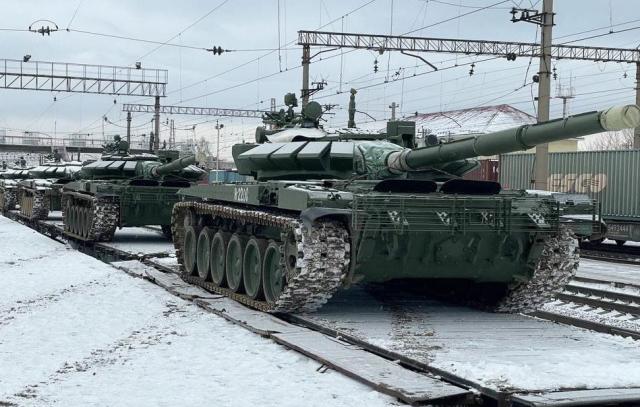 |
| T-72B3M tanks. |
| Source: Press Service of the Central Military District/ TASS |
Uraltransmash has prematurely supplied Msta-S self—propelled artillery units and the most powerful and long-range 2S7M Malka self-propelled guns to the troops, and the Armored Repair Plant has upgraded BTR-82AM armored personnel carriers. As for the supply of T-72B3M, the experts interviewed by TASS agreed that such modernization is a relatively inexpensive way to quickly and efficiently saturate troops with tanks.
Following the results of the use of Russian armored vehicles in the special operation in Ukraine, it was decided to improve some samples. So, infantry fighting vehicles BMP-3 have been reinforced with additional protection complexes in the form of armored screens, the executive director of Kurganmashzavod (KMZ, part of the "High-Precision Complexes") told TASS in an interview Pyotr Tyukov.
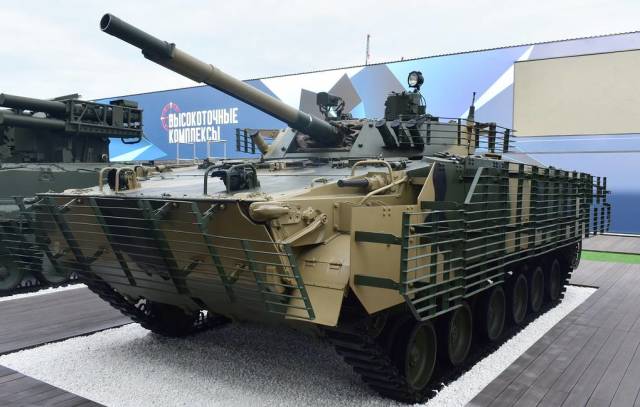 |
| Infantry fighting vehicle BMP-3M. |
| Source: © Dmitry Fedyushko/TASS |
The improved car, together with the similarly modified BMD-4M, was demonstrated in November by the Deputy head of the Security Council of the Russian Federation Dmitry Medvedev. Among other things, the KMZ is working on the issue of equipping the BMP-3 with an active protection complex, as well as military proposals to resume the production of early-generation IFVs or their overhaul with modernization.
In the first half of 2022, the state tests of the upgraded 125 mm self-propelled anti-tank gun 2S25 were completed. And KMZ has already started preparing production for the serial production of this machine.
In addition, at the Army-2022 forum in August, a robotic BMP-3 with a Tit combat module was presented for the first time. The set of equipment installed in the car made it possible to robotize the functions of the driver and shooter, which are controlled remotely.
Air defense
In April, it became known about the launch into mass production of a promising S-500 Prometheus anti-aircraft missile system developed by the Almaz-Antey concern of East Kazakhstan Region. It should replace the S-400 Triumph air defense system. In August, at the Army-2022 forum, the Ministry of Defense of the Russian Federation and the concern signed a contract for the supply of S-500 to the troops.
In June, the Izhevsk Electromechanical plant "Kupol" began to create a new module of the anti-aircraft missile system (SAM) "Tor", in which new software will be installed that allows you to shoot down low-flying targets. The complex will implement new technical solutions developed in the Arctic: doubled ammunition, software, a new lightweight hull. This means of air defense should become the only one in the world that can be transported by helicopter on an external suspension.
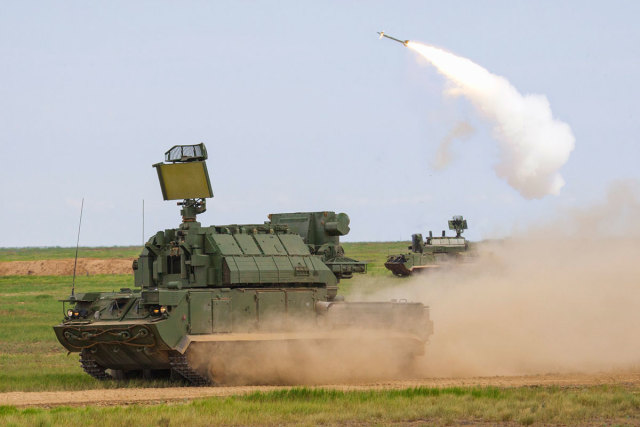 |
| SAM "Tor-M2". |
| Source: Photo: Ministry of Defense of the Russian Federation/mil.ru |
Another development in the field of air defense — at the Army-2022 forum, models of a new improved line of tracked armored vehicles for various air defense systems were shown for the first time, as well as a special wheeled chassis for the Tor-M2K complex. The chassis body design allows you to free up the volume for the placement of the SAM equipment and provides rigidity and strength of the body, protecting the calculation of the complex from external influences.
Drones
The special operation in Ukraine has shown that drones play an important role in modern armed conflicts. If at the beginning of its drones were produced in small-scale batches, now their production is put on stream. So, according to Rostec, drones manufactured by the Kalashnikov concern — Lancet and CUBE - are successfully used in the operation zone, independently conducting reconnaissance and attacking targets.
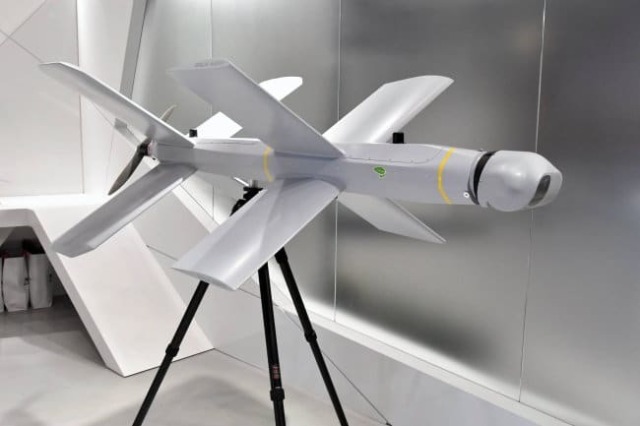 |
| An earlier "Lancet". |
| Source: ZALA |
According to Alan Lushnikov, president of Kalashnikov, the concern is constantly modernizing the work of all means and is in direct contact with the Ministry of Defense on this issue. Responding to the requests of the army to solve the tasks of its own, Kalashnikov began supplying the latest unmanned aerial vehicles (UAVs) of the copter type to the Russian troops. According to him, this is a whole line. As an example, the head of the concern cited the ZALA 421-24 copter of the ZALA AERO company, presented at the Army-2022 forum. This drone is capable of operating in electronic countermeasures and flying in full radio silence mode.
In May, the head of Rostec, Sergey Chemezov, at a meeting with Russian President Vladimir Putin, reported that serial production of the Russian heavy attack drone "Hunter" will begin in 2023. It was also reported that in order to establish the production of these machines, the production of the Novosibirsk Aviation Plant named after V.P. Chkalov (a branch of PJSC Sukhoi Company) will be modernized, including the construction of a new building. In May, frequency tests of a prototype were conducted at the Novosibirsk Aircraft Factory.
In addition, in 2022 it became known that a ground control point was being created for the Hunter. As the head of the United Aircraft Corporation, Yuri Slyusar, told TASS, a number of sets of ground control points have already been created, which are designed in accordance with the customer's requirements.
It also became known about the development of the program of the Russian strike drones "Sirius" and "Orion" of the Kronstadt company. As the developer company told TASS, these drones have already been successfully tested as part of a reconnaissance and strike circuit with manned aircraft.
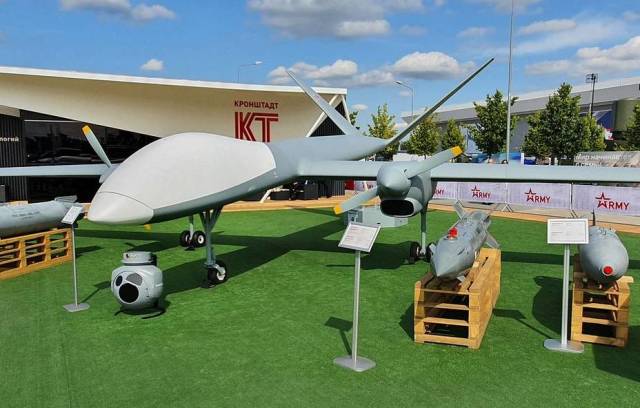 |
| The Sirius drone. |
| Source: TASS |
Military expert Alexey Leonkov stressed in an interview with TASS that it is the development of unmanned aircraft systems that is the future. "The history of drones shows that the establishment of mass production of drones that fly at speeds up to 300 km/h maximum is the current solution to the issue. And if we want to be ready for the wars of the future, the speed of drones should increase," he believes. "Just as the design of the UAV itself should change so that they can perform various combat tasks as part of reconnaissance and firing circuits, as well as in cooperation with parts of the air force, with aviation equipment."
Aviation
In aviation, one of the heroes of the special operation was the Ka-52 reconnaissance and attack helicopter. The machine has proven itself well in combat. According to TASS sources, the upgraded Ka-52M was also tested in a special operation in Ukraine. At the Army-2022 forum, the Russian Defense Ministry signed contracts for the supply of these upgraded attack helicopters.
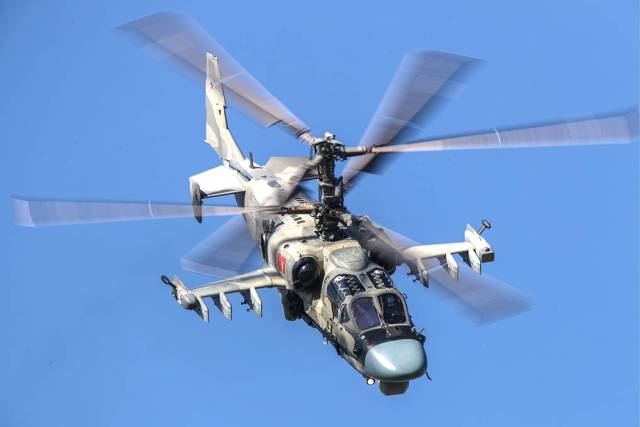 |
| Ka-52 Alligator helicopter. |
| Source: © Sergey Bobylev/TASS |
The Ka-52M, according to the developers, has a missile armament unified with the armament of another newest attack helicopter — the Mi-28NM, which significantly increased the range of hitting targets. The Ka-52M also received a new radar system with an active phased array antenna and a guided missile with an extended range. And it has network—centric capabilities - it is able to work together with unmanned aerial vehicles and interact with other helicopters and airplanes.
The Ka-52M also became the first aviation complex to receive the latest domestic structural condition monitoring system developed by SIC IRT. At the moment, the system is serially supplied and installed on all upgraded machines. This system will also be installed on fifth-generation Su-57 fighters. In the future, it is planned to be implemented on all Russian military and civilian aircraft and helicopters.
It is worth noting that almost all promising aviation weapons of destruction created and produced by the Tactical Missile Armament Corporation (KTRV) were used during the SVO. It is noteworthy that in August, for the first time, a new inconspicuous high-precision cruise missile X-69 was shown. As noted in an interview with TASS, the director General of the KTRV Hero of Russia Boris Obnosov, equipping with this ammunition allows you to maintain the stealth of the carrier aircraft and increase the ammunition, which will significantly increase the efficiency of the aviation complex as a whole. In addition, Obnosov spoke about the successful launches from drones of the homing guided short-range missile X-MD-E.
This year, there was also news about a fifth—generation missile carrier being developed in Russia - a promising long-range aviation complex (PAK DA). So, according to TASS, bench tests of several prototypes of the newest engine "Product of the Russian Federation" have already passed. According to their results, we can say that the engine confirms the parameters embedded in it. UEC-Kuznetsov (part of the United Engine Corporation) is currently preparing for the production of the engine.
It was reported that the preliminary design of the PAK DA aircraft was approved and PJSC Tupolev started developing working design documentation. This complex is designed according to the "flying wing" scheme, technologies and materials that reduce visibility (stealth technology) will be widely used in the design. And in the fall, Sergey Pozdnyakov, general director of the Zvezda Research and Production Enterprise, said in an interview with TASS that tests of an ejection seat had begun for a promising missile carrier.
Hypersonic weapons
On July 31, Russian President Vladimir Putin announced at the Main Naval Parade in St. Petersburg that deliveries of the latest Zircon hypersonic complexes to the Armed Forces of the Russian Federation will begin in the coming months, and the frigate of the Northern Fleet Admiral Gorshkov will be the first to go on combat duty with these missiles. The area of service of the ship will be chosen based on the interests of ensuring the security of Russia.
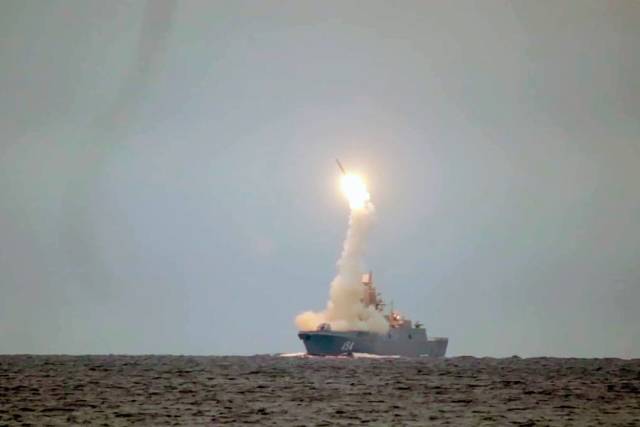 |
| Launch of the hypersonic cruise missile "Zircon" from the frigate "Admiral Gorshkov". |
| Source: © Press Service of the Ministry of Defense of the Russian Federation/TASS |
In August, on the sidelines of the Army-2022 forum, Russian Defense Minister Sergei Shoigu announced that mass production of these hypersonic missiles had already begun. The complex "Zircon" is developed and manufactured in the Reutovsky NPO of Mechanical Engineering (part of KTRV). The rocket from the Zircon complex is capable of developing a speed equal to nine Mach numbers (speeds of sound), has a range of more than 1 thousand km.
But this year's news about "Zircon" did not end there. TASS reported for the first time that a mobile launcher of the coastal missile system (DBK) with a Zircon missile has already been developed and manufactured in iron. As in the case of the Bastion missile defense system, the launcher will carry two missiles and have the ability to hit both surface and ground targets. In addition, it will be able to launch supersonic Onyx missiles used both in Bastion and on surface and underwater carriers.
This year, the first combat use of hypersonic Dagger missiles from the MiG-31K interceptor took place during a military special operation in Ukraine. This was the first use of hypersonic weapons in real combat conditions in world history. The missile has low radar visibility and high maneuverability and is designed to destroy land and sea targets.
Fleet
One of the main naval events of this year - Russia for the first time received a special—purpose nuclear submarine "Belgorod" project 09852, built at the Sevmash plant. It is expected that it will become the carrier of strategic unmanned underwater vehicles of the Poseidon type.
Vladimir Karnozov, a TASS military observer, called the Army-2022 forum the main event this year, noting that "other events have faded against its background." Several developments and concepts of underwater vehicles were presented at the exhibition. Thus, the Navy Commander-in-chief showed a mock-up of a strategic submarine for Arctic conditions, which is the carrier of autonomous underwater uninhabited systems: the autonomous uninhabited underwater escort vehicle Surrogate-V and the autonomous underwater search robot Juno. For the first time, a unique shipboard UAV launch and landing system has been demonstrated, which can be installed on any carrier ship of deck helicopters.
The Nevsky Design Bureau (PKB, part of the United Shipbuilding Corporation, USC) at the exhibition showed a model of a promising Russian universal landing ship (UDC) on a unified platform. It has a two-level internal hangar to accommodate helicopters and armored personnel carriers, as well as a flooded dock for transporting and launching up to three amphibious hovercraft of the Zubr type.
Another interesting development of the Nevsky PCB is a line of promising ships designed to respond to pandemics and man—made disasters. It includes a hospital ship to provide assistance to victims of natural disasters or catastrophes, as well as a ship for medical care and isolation of a large number of infected people.
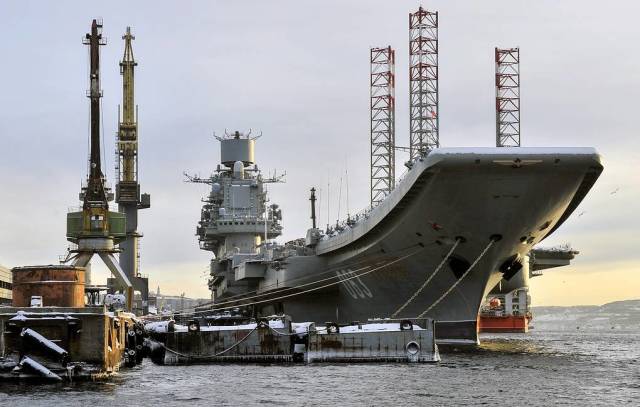 |
| Aircraft carrier "Admiral Kuznetsov". |
| Source: © Lev Fedoseev/TASS |
The repair of the heavy aircraft carrier Admiral Kuznetsov continued this year. In mid-June, he was brought to the dock of the Murmansk 35th ship repair plant. According to the head of USC Alexey Rakhmanov, the ship can be transferred to the Navy in the first quarter of 2024. At the same time, it became known that the strategic nuclear submarine missile cruiser Dmitry Donskoy is being prepared for withdrawal from the fleet — now the technical crew remains on the submarine.
In addition, at the Army-2022 forum, KTRV presented for the first time a new electric torpedo ET-1E. As told to TASS in the GNPP "Region", it is capable of independently making a number of decisions, including bypassing interference, and can be equipped with additional modules thanks to the appropriate design.
The Guarantor of Peace
On April 20, the first launch of the Sarmat intercontinental ballistic missile (ICBM) was made from the Plesetsk cosmodrome in the Arkhangelsk region. According to the Ministry of Defense of the Russian Federation, work is already underway in the Uzhursky missile compound in the Krasnoyarsk Territory to prepare the main missile regiment for rearmament with this missile complex. "Sarmat" was developed at the V.P. Makeev State Rocket Center (GRC) (part of Roscosmos), the manufacturer is the Krasmash plant. Serial production of these missiles has already started, in August at the Army-2022 forum, the Ministry of Defense of the Russian Federation signed a contract for the supply of Sarmats.
| jpg">Launch of the Sarmat intercontinental ballistic missile from the Plesetsk cosmodrome. |
| Source: Press Service of the Ministry of Defense of the Russian Federation/ TASS |
As Vladimir Degtyar, Director General of the V.P. Makeev GRC, emphasized in an interview with TASS, today there are no weapons comparable in capabilities to the Sarmat ICBM anywhere in the world. Its uniqueness lies in its unsurpassed speed, record range, the highest shooting accuracy and complete invulnerability when overcoming the missile defense system. The ICBM will be able to exit the mine under any conditions and is guaranteed to fulfill its task, no matter what.
TASS military observer Viktor Litovkin called the end of the tests of the Sarmat strategic missile system the main event in the defense industry in 2022. "The creation of the Sarmat serves as a decisive deterrent against a more active, brazen US intervention in the special operation in Ukraine," he said. "They don't dare to invade there with their troops, they don't want to go to war with nuclear—missile Russia, because they understand what this can lead to."
Litovkin stressed that it is precisely such a powerful weapon that allows us to preserve global peace. "Thanks to the Sarmatians, Avangards and Yars, who are on combat duty, we are preserving global peace on the planet," the expert concluded.
Also this year it became known for the first time that the defense industry enterprises have started designing a new generation strategic missile system. However, so far this work is being carried out in a research plan.
Milena Sineva, Georgy Sultanov, Roman Azanov
